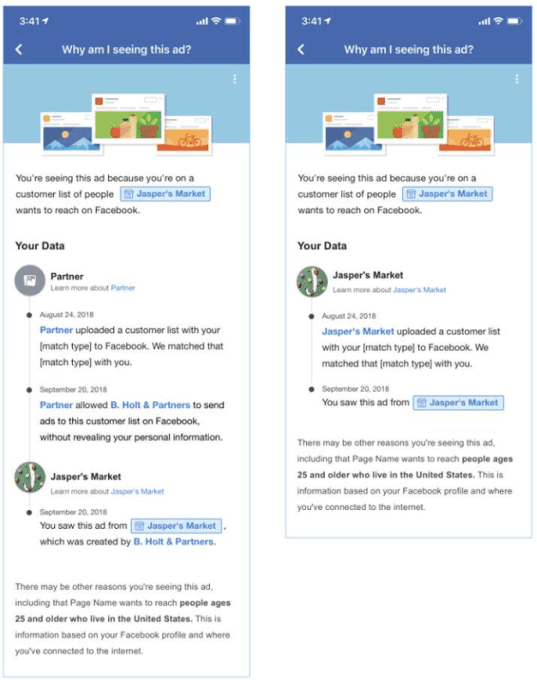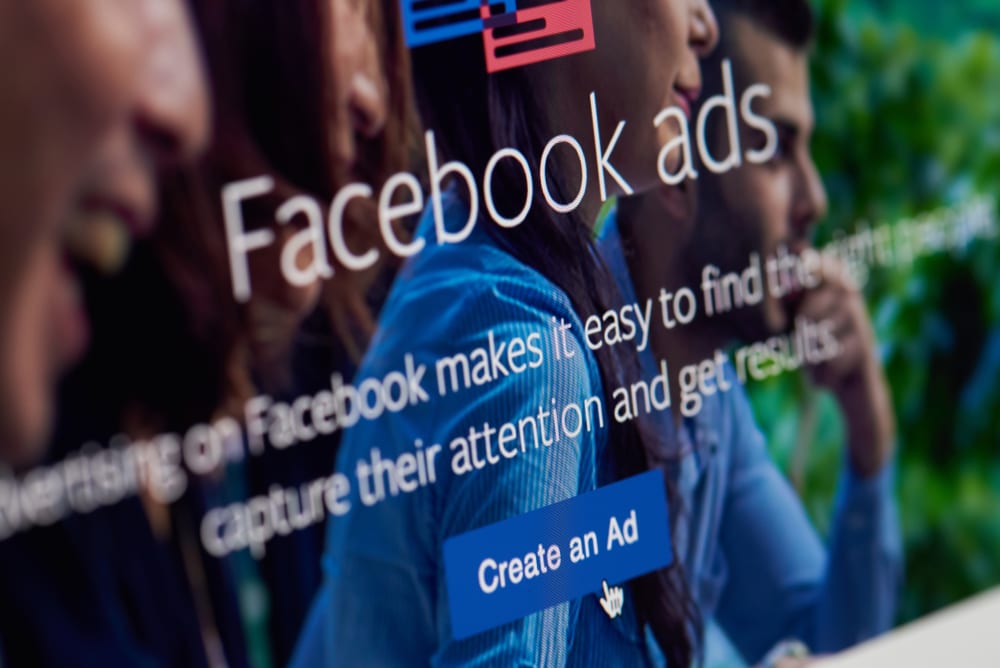Facebook Provides New Transparency Around Ad Targeting to Users
By: Justin Joffe
February 7, 2019
Last year, Facebook announced that it would begin to penalize brands participating in non-consensual ad targeting. Now we finally have an idea of what that will look like.
After making advertisers pledge that they have permission to upload a user’s contact information to Facebook back last March, the platform eventually launched a “Why am I Seeing This?” button, which as of last November also became a way for agencies and marketing technology firms to indicate who they were buying promotions “on behalf of.” Beyond the honor system, though, use of the feature was never mandated or enforced.
User feeds already feature a “Why am I seeing this?” button that reveals what brand paid for the ad, a bit of the parameters being used to target and if a user’s contact information has been uploaded to the platform. Come Feb. 28, however, users will also be able to see when their contact information was uploaded, who uploaded it and how the information was shared between all marketing parties involved.
The consequences of this could be huge for smaller brands or organizations that partner with big marketing technology firms or advertising agencies whose strategies they don’t understand. And with the rollout of these new front-facing details just around the corner, communicators must have difficult conversations with any external ad partners now to make sure their targeting strategies are kosher and on-the-level.

A side-by-side for how the new “Why am I seeing this?” (L) will look compared to the old page (R)
What might not be on-the-level, exactly? One particular pain point for Facebook has been around regulated industries participating in micro-targeting practices that are discriminatory or otherwise illegal in the non-digital space. A good rule of thumb—if there are real-world rules prohibiting a practice that can inform your advertising, make sure your ad partners aren’t trying to get away with something similar using Facebook on your behalf.
Last September, for example, the “Why am I seeing this?” tool led to an exposé around an employer that was only targeting men of a certain age in its ad outreach, effectively preventing prospective female candidates from ever seeing the posting. Because employment discrimination is illegal, the Equal Employment Opportunity Commission, Communications Workers of America and the American Civil Liberties Union all got involved in the resulting lawsuit.
By providing users with an increased level of transparency around how brands get their information, Facebook hopes that users will self-regulate their privacy settings to make themselves more secure. The new feature also aims to provide users more information about the bad actors (here’s looking at you, Cambridge Analytica) who continue to weaponize the platform’s proprietary insights to illegal ends.
Time will tell how much progress this yields next month. Until then, communicators would be wise to partner with marketing, advertising and legal firms in the short term, if only to double-check that there’s nothing about their ad strategy they wouldn’t want end users to see.
Follow Justin: @Joffaloff


